Many of the trees that are indigenous to the Land of Israel are mentioned dozens of times in the Bible. The palm, oak and olive trees are notable examples. But one tree that is mentioned a mere six times in the Bible is just as important. This tree is so typical of the Land of Israel that the Patriarch Jacob sent some of its fruit as a gift to Joseph when his sons went down to Egypt (Gen. 43:11). Do you know what this tree is?
In Genesis 43, Jacob sends his sons down to Egypt a second time, this time with the youngest, Benjamin. Hoping to curry favor with the the governor of Egypt (= Joseph), Jacob sends him a gift-basket which includes the best that the land has to offer.
Then their father Israel said to them, “If it must be so, then do this: take some of the choice fruits of the land in your bags, and carry them down as a present to the man—a little balm and a little honey, gum, resin, pistachio nuts, and almonds. (Genesis 43:11)
The phrase “choice fruits of the land” (זִּמְרַת הָאָרֶץ – zimrat haaretz) is a very interesting and unique phrase in the Bible. It appears only here. The word זמרה zimrah comes from the root זמר (ZMR), which means “to prune.” So, initially, the phrase simply means “the trimmings of the land.” But this is a slightly problematic translation because not all the items here are technically pruned. The gum and resin (also mentioned in the Ishmaelite caravan in Gen. 37:25) are obtained by making an incision in the bark of a tree, not by pruning it. Could there be another way of translating this phrase?
Throughout the Bible the root זמר (ZMR) has a a second, much more common meaning: “to sing, or to make music, particularly in praise of God.” Many of the biblical psalms, for example, begin with a superscription that contains the word מזמור (mizmor), a song of praise. For example, Psalm 63 begins with these words:
מִזְמוֹר לְדָוִד; בִּהְיוֹתוֹ, בְּמִדְבַּר יְהוּדָה
A Psalm (mizmor) of David, when he was in the wilderness of Judah.
So alternatively, the phrase zimrat haaretz in Genesis 43:11 could mean “the song of the land.” What is the land singing about? What does a fruit basket have to do with singing God’s praises? Perhaps it has to do with the last item mentioned in Jacob’s basket of choice fruits: almonds (amygdalus communis).
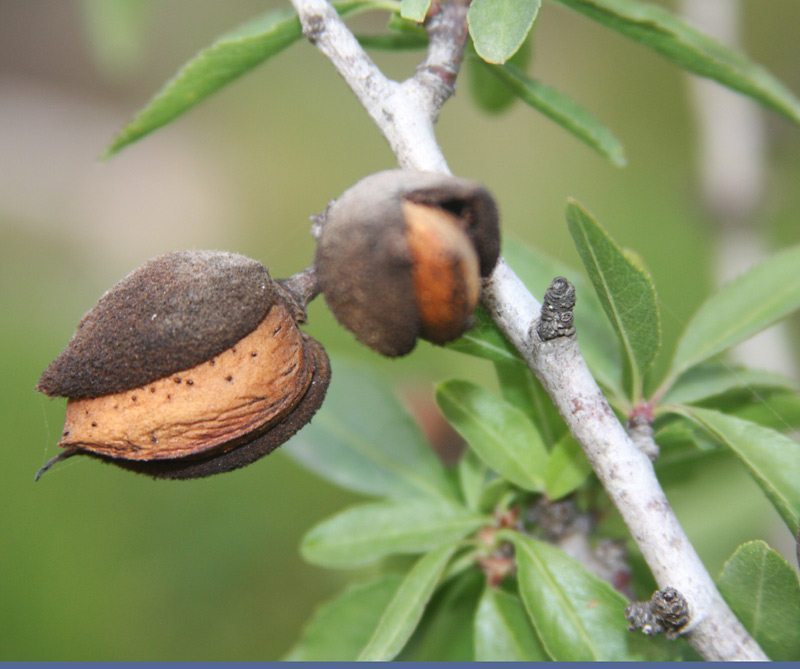 The word for “almond” in Hebrew is shaked שקד, which comes from the root שקד (ShKD), which means “diligent, hardworking”. The almond has a well-deserved reputation as the most diligent tree in the land. As the winter draws to a close, while the other trees are still dormant, the almond arises early and blossoms even before its leaves have grown in. In February, the hills of the Land of the Israel are filled with beautiful white and pink flowers, announcing the beginning of the spring.
The word for “almond” in Hebrew is shaked שקד, which comes from the root שקד (ShKD), which means “diligent, hardworking”. The almond has a well-deserved reputation as the most diligent tree in the land. As the winter draws to a close, while the other trees are still dormant, the almond arises early and blossoms even before its leaves have grown in. In February, the hills of the Land of the Israel are filled with beautiful white and pink flowers, announcing the beginning of the spring.
The photo below shows the almond trees blooming in the village of Ein Kerem, located a few miles west of Jerusalem. This is the traditional birthplace of John the Baptist and contains the Church of Visitation where Mary visited her cousin Elizabeth according to Luke 1:39-40 (although the village is referred to merely as “a Judean town in the hill country” in the Gospel of Luke).
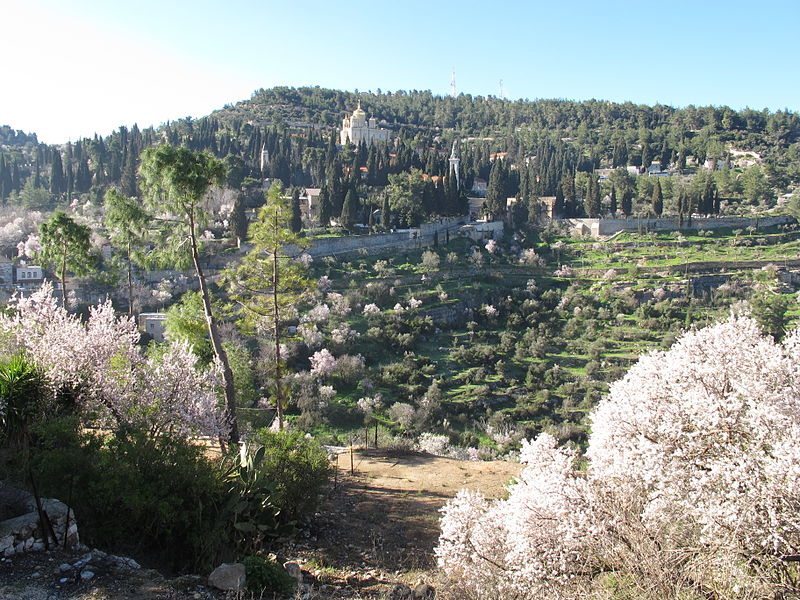 But these flowers are more than merely a beautiful sight for hikers and nature-lovers. The almond flower served as the inspiration for the design of the menorah, the seven branched golden candelabrum which illuminated the Tabernacle, and later both Temples. The Bible says that each of the menorah’s branches shall have a cup “shaped like an almond blossom, each with calyx and petals” (Exodus 25:33). Here is a close-up of an almond blossom. Presumably, the seven cups that held the oil in the menorah were designed to look like this flower.
But these flowers are more than merely a beautiful sight for hikers and nature-lovers. The almond flower served as the inspiration for the design of the menorah, the seven branched golden candelabrum which illuminated the Tabernacle, and later both Temples. The Bible says that each of the menorah’s branches shall have a cup “shaped like an almond blossom, each with calyx and petals” (Exodus 25:33). Here is a close-up of an almond blossom. Presumably, the seven cups that held the oil in the menorah were designed to look like this flower. We cannot know for sure what the menorah in either of the Jerusalem Temples looked like. The Second Temple was destroyed in 70 CE and the menorah was brought to Rome and never seen again. However, most archaeologists agree that the image of the menorah found on the Arch of Titus is likely a good approximation of what the real menorah in the Second Temple looked like. This relief was sculpted only about 12 years after the destruction of the Temple and the transferal of the spoils to Rome.
We cannot know for sure what the menorah in either of the Jerusalem Temples looked like. The Second Temple was destroyed in 70 CE and the menorah was brought to Rome and never seen again. However, most archaeologists agree that the image of the menorah found on the Arch of Titus is likely a good approximation of what the real menorah in the Second Temple looked like. This relief was sculpted only about 12 years after the destruction of the Temple and the transferal of the spoils to Rome.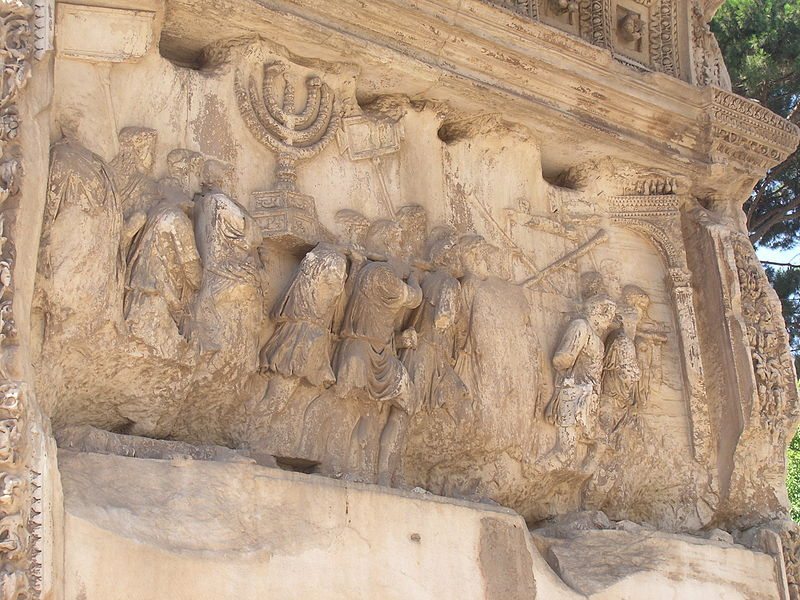 This artist’s sketch of the extant parts of the menorah from the Arch of Titus reveals the almond blossom motif nicely.
This artist’s sketch of the extant parts of the menorah from the Arch of Titus reveals the almond blossom motif nicely.
But to really appreciate the power of the almond tree, we need to turn our attention to the prophetic books of the Hebrew Bible. In chapter 1 of Jeremiah, God calls the prophet for the first time by showing him an almond branch. This is meant to assure the novice prophet that he is in good hands:
The word of the Lord came to me, saying, “Jeremiah, what do you see?” And I said, “I see a branch of an almond tree.” Then the Lord said to me, “You have seen well, for I am watching over my word to perform it.” (Jeremiah 1:11-12)
At first, this does not make much sense. However, when read in the original Hebrew, there is a clever pun at work here: “You have seen well, for I am watching over my word to perform it.”
וַיְהִי דְבַר-יְהוָה אֵלַי לֵאמֹר, מָה-אַתָּה רֹאֶה יִרְמְיָהוּ; וָאֹמַר, מַקֵּל שָׁקֵד אֲנִי רֹאֶה. וַיֹּאמֶר יְהוָה אֵלַי, הֵיטַבְתָּ לִרְאוֹת: כִּי-שֹׁקֵד אֲנִי עַל-דְּבָרִי, לַעֲשֹׂתוֹ.
The word for “watching over” in Hebrew is shoked שוקד, which is very similar to the word for almond (shaked). This reassuring image of the industrious almond tree also appears following Korah’s rebellion in the Book of Numbers. A wooden staff is gathered from each of the twelve tribal chieftains, and Aaron’s name is written on the staff of Levi. The staffs are left overnight in the Tabernacle.
When Moses went into the tent of the covenant on the next day, the staff of Aaron for the house of Levi had sprouted. It put forth buds, produced blossoms, and bore ripe almonds.
A final use of the almond tree as an assuring symbol of the continuity of life is expressed in one of the most puzzling verses in Ecclesiastes:
when one is afraid of heights, and terrors are in the road; the almond tree blossoms, the grasshopper drags itself along and desire fails; because all must go to their eternal home, and the mourners will go about the streets (Eccles. 12:5).
Contrary to human beings that “must go to their eternal home” the almond tree continues to blossom year after year. Maybe Jacob decided to include almonds in his gift-basket to communicate a subtle but powerful message. The almond (shaked) whose blossoms sing out (zimrah) so powerfully each spring are Jacob’s way of uttering words of praise (zimrah) to thank God for watching over (shakad) his beloved son Joseph.




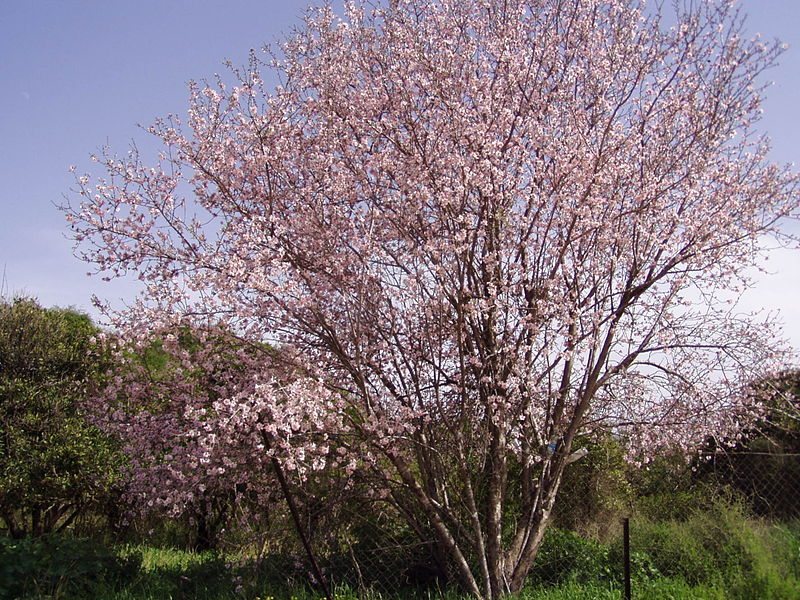


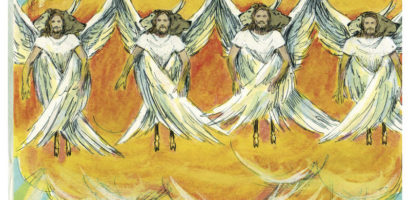
Fabulous commentary – brilliant – thank you. The colour ‘Almond pink’ most likely connects well to Ucello’s compositions, identifying with the wider Ashkenazi schema (Albers 1965). Therefore, I consider Zimrat Haaretz and of course the Ein Kerem environs to be of relevance in assessing the impact and continuing use of the metric ‘archive’, pioneering further critical modern applications (After: Tetsaveh 5748), Savage-Smith, E. (2010).